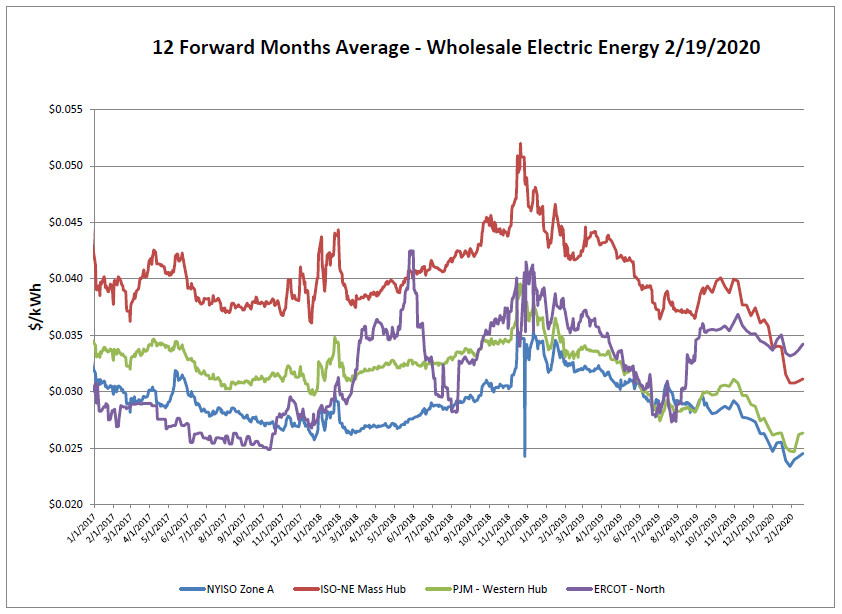Electricity Markets

Pricing continued to rise across all ISOs in relation to the underlying cost of gas. Texas saw the most dramatic increase as peak summer rates continue to climb.

It was a quiet week in the daily markets despite a short cold spell that has, historically, incited isolated volatility.
Natural Gas Markets

Six-Month Natural Gas Futures
Futures as of 2/19/2020 versus previous week:
|
Mar-20 |
$1.984 |
+$0.128 |
|
Apr-20 |
$1.986 |
+$0.104 |
|
May-20 |
$2.023 |
+$0.089 |
|
Jun-20 |
$2.071 |
+$0.071 |
|
Jul-20 |
$2.129 |
+$0.055 |
|
Aug-20 |
$2.156 |
+$0.047 |
Natural Gas Inventory

The EIA reported a draw from storage of 151 Bcf. Working gas in storage was 2,343 Bcf as of Friday, February 14, 2020. This was above market expectations and the 5-year average of 136 Bcf.

The Baker Hughes exploration gas rig count remained steady this week for a total of 110. This is 84 fewer rigs than the 194 in operation at this time one year ago.
Weather Update

Temperatures are expected to be above normal for all states west of the Mississippi river while the much of the East Coast and Florida are predicted to fall below normal.
National Weather Service Updates (NOAA)
Hurricane Watch: No Current Hurricanes Click here to view the National Hurricane Center site.
Equatorial Pacific Outlook:
Click here to view La Nina and El Nino status.
Energy News
There is no time to lose in the fight against climate change. We cannot afford to take a single step backward. Yet while we should be running headlong into smart, collaborative and long-term solutions that help mitigate the immediate climate crisis, our federal regulators have instead jeopardized the good progress made toward transitioning our energy systems to zero-carbon sources.
Has US Nuclear Power Reached Its Half-Life?
This is the fifth of a multi-part series on the state of the main sources of energy in the US and how they compare globally. The series will cover solar, wind, oil & gas, coal, nuclear, and geothermal (so far) and will answer the same four questions for each.
